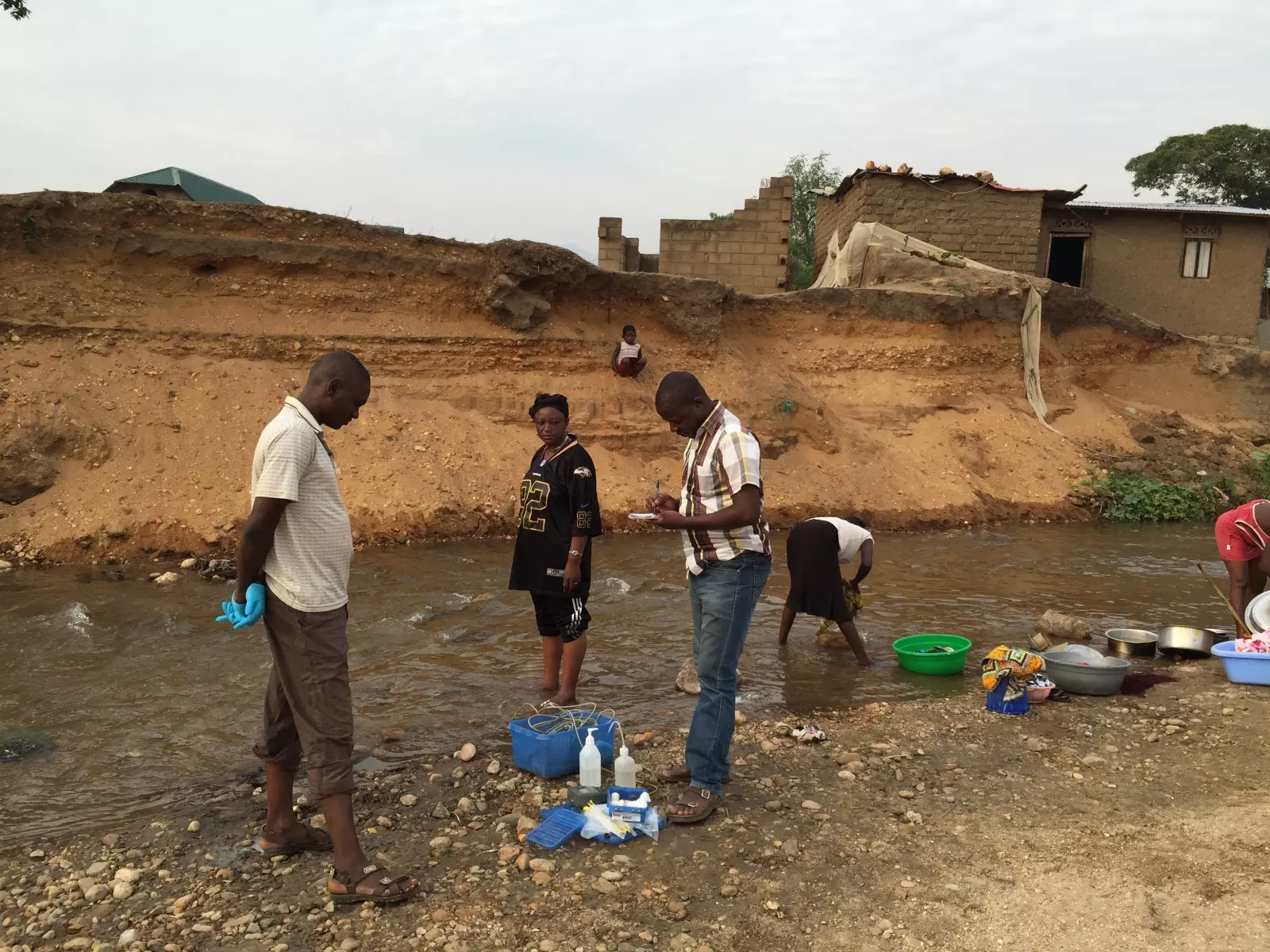
In many low- and middle-income countries, limited access to safe water remains a major public health concern, which plays a role in diarrheal diseases such as cholera. The Democratic Republic of the Congo (DRC) is one of a few countries where access to piped water on the premises has declined over the last 30 years[1]. Uvira, the second largest town in South Kivu Province in the DRC, is considered a cholera hotspot from which the disease regularly spreads to other at-risk areas[2, 3]. To prevent cholera and other diarrheal diseases in the DRC, a project aiming to rehabilitate and extend the piped water infrastructure in Uvira is ongoing since September 2018. The project is funded by the European Union, the French Development Agency and the Veolia Foundation, in partnership with the National Water Agency, Regideso.
As part of an evaluation of the impact of the project on household water-related practices, a recent study by Jeandron and colleagues, published in NPJ Clean Water, aimed to develop and assess predictive models to estimate 1) the probability of microbial contamination of household drinking water and 2) the quantity of water used at home for domestic activities. Three household parameters were used for the study: demographic composition, tap water service and distance from the nearest waterbody (which may be used as a water source)[4].
The model showed that over 80% of households in areas closest to rivers and with poor tap water service were predicted to store contaminated drinking water. The risk of water contamination associated with transport or storage was reduced when the household had access to a closer and more reliable tap, even for households located close to a waterbody. Furthermore, the quantity of water consummed only decreased with increasing distance from a waterbody when the nearest river or lake was further than 500 meters away[4].
This study indicates that external factors play an important role in the contamination of stored household drinking water. Interestingly, the model performed better for poorer households, which implies that these households are more dependent on external factors, with few mechanisms to compensate (such as improved water storage containers, household water treatment)[4].
In conclusion, these study results provide valuable information that supports the ongoing water supply infrastructure project in Uvira. This approach therefore warrants further investigation in other settings with limited access to safe water.
References :
- World Health Organization & UNICEF. Progress on drinking water, sanitation and hygiene: 2017 update and SDG baselines. (World Health Organization, Geneva, 2017).
- Bompangue, D. et al. Lakes as source of cholera outbreaks, Democratic Republic of Congo. Emerg. Infect. Dis. 14, 798–800 (2008).
- Brecht, I. et al. Recurrent cholera outbreaks, Democratic Republic of the Congo, 2008–2017. Emerg. Infect. Dis. J. 25, 856 (2019).
- Jeandron et al. Predicting quality and quantity of water used by urban households based on tap water service. NPJ Clean Water. 2:23 (2019).
